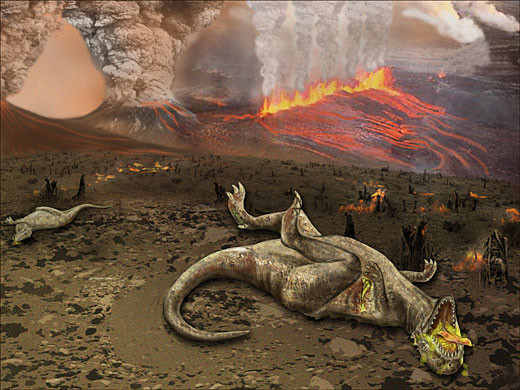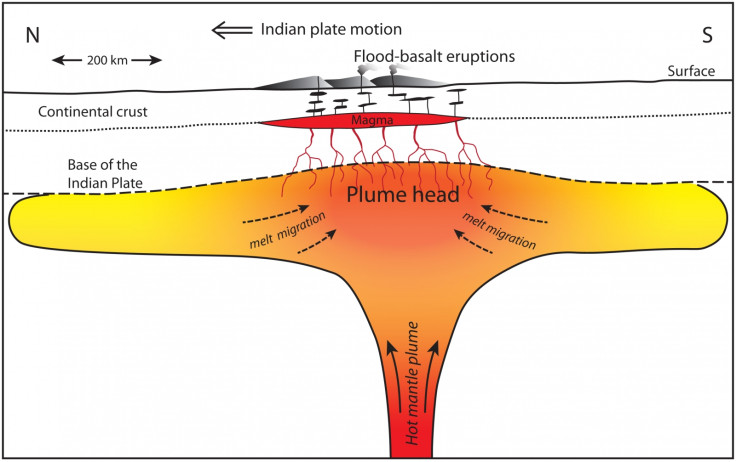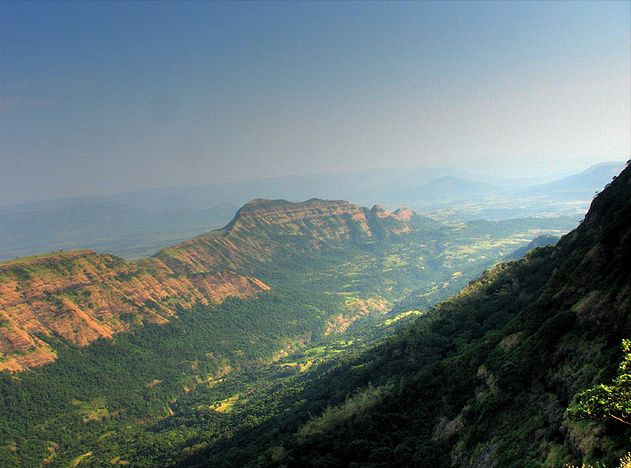Dinosaur-killing asteroid 'triggered most immense lava eruptions ever seen on Earth'

The dinosaur-killing asteroid that struck Earth 66 million years ago may have triggered the most immense lava flows ever seen on Earth, covering an area about half the size of modern India.
Scientists at the University of California, Berkeley, have said there it is an "uncomfortably close" coincidence that the eruptions of lava at the Deccan Traps began around the same time as the asteroid impact.
The Deccan Traps is one of the largest volcanic features on the planet, consisting of multiple layers of solidified flood basalt covering an area of 500,000 km2 (193,051 sq mi). They began forming 66.25 million years ago and a series of eruptions beginning 66 million years ago lasted for about 30,000 years.
Scientists currently believe the area covered by the lava flows was as large as 1.5 million km².
Team leader Mark Richards said the chances of both the asteroid impact and the Deccan Traps eruptions occurring within 100,000 years of one another randomly are "miniscule".

The scientists, publishing their findings in The Geological Society of America Bulletin, say their findings also give more weight to the idea that the asteroid was not the only factor in the mass extinction event that followed the impact - as well as lava, the Deccan Traps would have spewed huge amounts of carbon dioxide and other climate-modifying gases into the atmosphere.
Previously, Richards had suggested the impact could have triggered the lava flows by being directly opposite – antipodal – to the impact. However, this theory was put to bed after it was discovered the impact crater, Chicxulub, was 5,000km from the antipode of the Deccan Traps.
The latest theory said that the asteroid could well have triggered huge earthquakes above magnitude 9 across the globe. This would have been enough to ignite the lava floods and eruptions at other places around the globe.
"It's inconceivable that the impact could have melted a whole lot of rock away from the impact site itself, but if you had a system that already had magma and you gave it a little extra kick, it could produce a big eruption," Michael Manga said.

The researchers also showed that lava from before the impact is chemically different from after – suggesting a faster rise to the surface after the impact.
Richards said: "This was an existing massive volcanic system that had been there probably several million years, and the impact gave this thing a shake and it mobilized a huge amount of magma over a short amount of time.
"The beauty of this theory is that it is very testable, because it predicts that you should have the impact and the beginning of the extinction, and within 100,000 years or so you should have these massive eruptions coming out, which is about how long it might take for the magma to reach the surface."
© Copyright IBTimes 2025. All rights reserved.






















